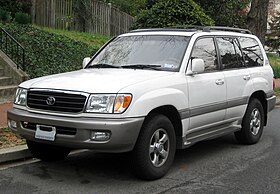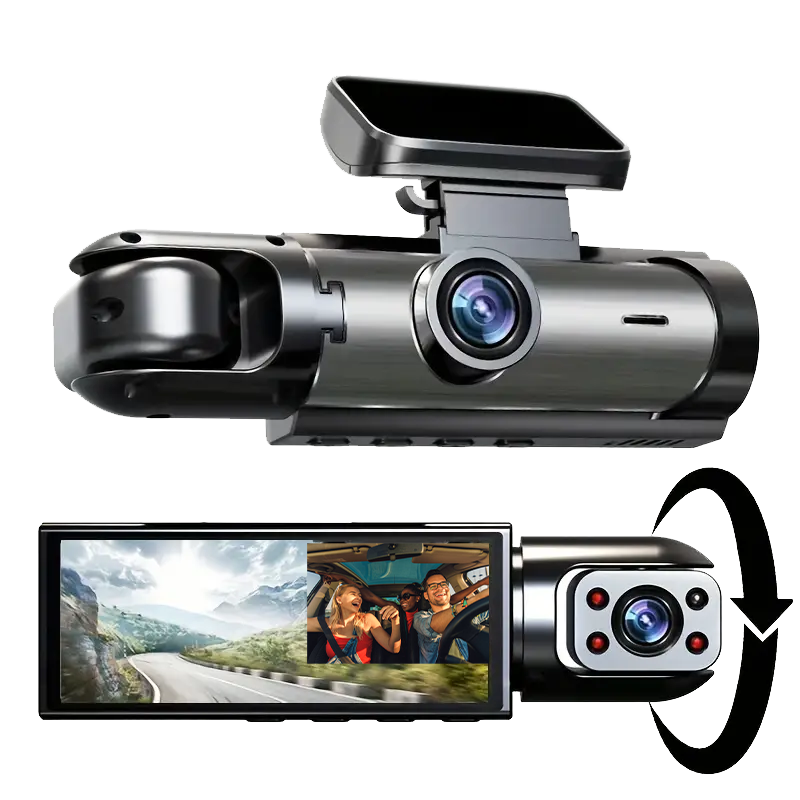
Toyota Land Cruiser J100 1998 - 2007

In January 1998, the 100 series Land Cruiser was introduced to replace the 8-year-old 80 series.
The 100 series was previewed in October 1997 as the "Grand Cruiser" at the 32nd Tokyo Motor Show. Development began in 1991 under code name 404T, with the final design being frozen in mid-1994. There are two distinct versions of the 100-series, the 100 and the 105. The two versions look very similar, but there are significant differences under the bodywork. Despite these differences and official model names, both the 100 and 105 are collectively known as the 100 series.
| J100 | |
|---|---|

Pre-facelift Toyota Land Cruiser (US)
|
|
| Overview | |
| Also called | Lexus LX 470 |
| Production | January 1998–2007 |
| Assembly |
|
| Designer | Takeo Kondo (1993) |
| Body and chassis | |
| Body style | 4-door wagon |
| Powertrain | |
| Engine |
|
| Transmission |
|
| Dimensions | |
| Wheelbase | 2,850 mm (112.2 in) |
| Length | 4,890 mm (192.5 in) |
| Width | 1,941 mm (76.4 in) |
| Height | 1,849 mm (72.8 in) |
| Curb weight | 2,320 kg (5,115 lb) |
The 105 carried over the majority of its chassis and powertrain from the 80-series with coil suspended solid axles front and rear, and straight-6 petrol and diesel engines. These models were only sold in African, Australian, Russian, and South American markets.
In 1998, a suspension system combining Active Height Control (AHC) and Skyhook TEMS Toyota Electronic Modulated Suspension on the Land Cruiser J100 was introduced.
In 2002, Toyota introduced Night View, the first worldwide series production active automotive night vision system, on the Toyota Landcruiser Cygnus or Lexus LX470. This system uses the headlight projectors emitting near infrared light aimed like the car's highbeam headlights and a CCD camera then captures that reflected radiation, this signal is then processed by a computer which produces a black-and-white image which is projected on the lower section of the windshield. It was also the first Toyota vehicle with roll-over sensor and control logic
The 100 models were fitted with a slightly wider chassis, independent front suspension (IFS) and two new engines. The change to IFS was a first for a Land Cruiser, and was made (in combination with rack-and-pinion steering) to improve on-road handling. However it also limited the vehicle's off-road capability and durability, hence the decision to offer the solid axle 105 models alongside the IFS 100 models in some markets was made. The table below identifies the range of 100 and 105 models and their worldwide availability.
Despite the 100 and 105 bodies being very similar, there are some exterior visual indications between both models. The most obvious is the front end of the vehicle often appearing lower than the rear on the 100 models, due to the IFS. The other indicator is the design of the wheels. The 100 models have almost flat wheel designs, while the 105 models have dished wheels. This difference allows both versions to retain similar wheel tracks, despite the 100 having a relatively wider axle track to allow for the IFS system.
The introduction of a V8 engine was also a first for a Land Cruiser, and was specifically intended to improve sales in the North-American market, where it was the only engine available. In Australia, the 100 V8 was initially only available in the range-topping GXV model, while entry and mid-range models were the 105 powered by the 1FZ-FE I6 petrol, or 1HZ diesel engines. The new 1HD-FTE turbo-diesel 100 was added to the Australian range in October 2000 after being available in Europe and the UK since the vehicle's launch in 1998. The automotive press in Australia were critical of Toyota's decision to offer the acclaimed 1HD-FTE engine only in combination with IFS. Australian 4WD Monthly magazine stated "We will never forgive Toyota for going independent at the front with the mighty 4.2 turbo-diesel".
The 100 series formed the basis for the Lexus LX 470, which was also sold in Japan as the Toyota Cygnus.
The 100 series was called the Toyota Land Cruiser Amazon in the UK and Ireland from 1998 to 2007.
In 2000, Toyota celebrated the 50th anniversary of the Land Cruiser with commemorative models offered in several countries. Total global production to date was 3.72 million vehicles.
The 100 series remained in production until late 2007, with several minor facelifts such as headlights, taillights, front grille, rear spoiler and specification changes introduced over the years.
| Designation | Engine | Power | Torque | Availability |
|---|---|---|---|---|
| HZJ105 | 1HZ 4.2 L diesel I6 | 96 kW (131 PS; 129 hp) at 3,800 rpm | 271 N⋅m (200 lb⋅ft) at 2,200 rpm | Africa, Asia, Australia, Middle East, South America |
| FZJ105 | 1FZ-FE 4.5 L petrol I6 | 180 kW (245 PS; 241 hp) at 4,600 rpm | 410 N⋅m (302 lb⋅ft) at 3,600 rpm | Africa, Asia, Australia, Middle East, South America |
| FZJ100 | 1FZ-FE 4.5 L petrol I6 | 180 kW (245 PS; 241 hp) at 4,600 rpm | 410 N⋅m (302 lb⋅ft) at 3,600 rpm | Middle East, China |
| UZJ100 | 2UZ-FE 4.7 L petrol V8 | 170 kW (231 PS; 228 hp) at 4,800 rpm | 410 N⋅m (302 lb⋅ft) at 3,400 rpm | Africa, Asia, Australia, China, Europe, Japan, Middle East, North America, UK |
| HDJ1001 | 1HD-T 4.2 L turbodiesel I6 | 123 kW (167 PS; 165 hp) at 3,600 rpm | 352 N⋅m (260 lb⋅ft) at 2,000 rpm | Africa, South America |
| HDJ1002 | 1HD-FTE 4.2 L turbodiesel I6 | 150 kW (204 PS; 201 hp) at 3,400 rpm | 430 N⋅m (317 lb⋅ft) at 1,400 rpm | Australia*, Europe, Japan, Middle East, New Zealand, UK |
*This engine was not introduced in Australia until 2000.
The 100-series is generally considered a durable and reliable vehicle, however there have been three known issues identified, generally for vehicles operating in harsh conditions:
- The IFS 100-series gained a reputation for front suspension failures in operating conditions where the front suspension was prone to hitting the bump stops. Several companies produce strengthened lower wishbones to prevent cracks from developing.
- Both the IFS 100 and Live-axle 105 models have been reported to be suffering from broken front differential centres when driven in harsh conditions. The most common front differential failures in IFS models are reported in vehicles produced between mid-1997 and mid-1999 (i.e. the model years 1998 and 1999), when Toyota fitted the 100 Series IFS with a 2-pinion front differential (the pinion gear would flex away from the ring gear under shock loads). In 1999 (model year 2000) the IFS Landcruiser received a 4-pinion front differential that was more robust – fewer failures were reported.
